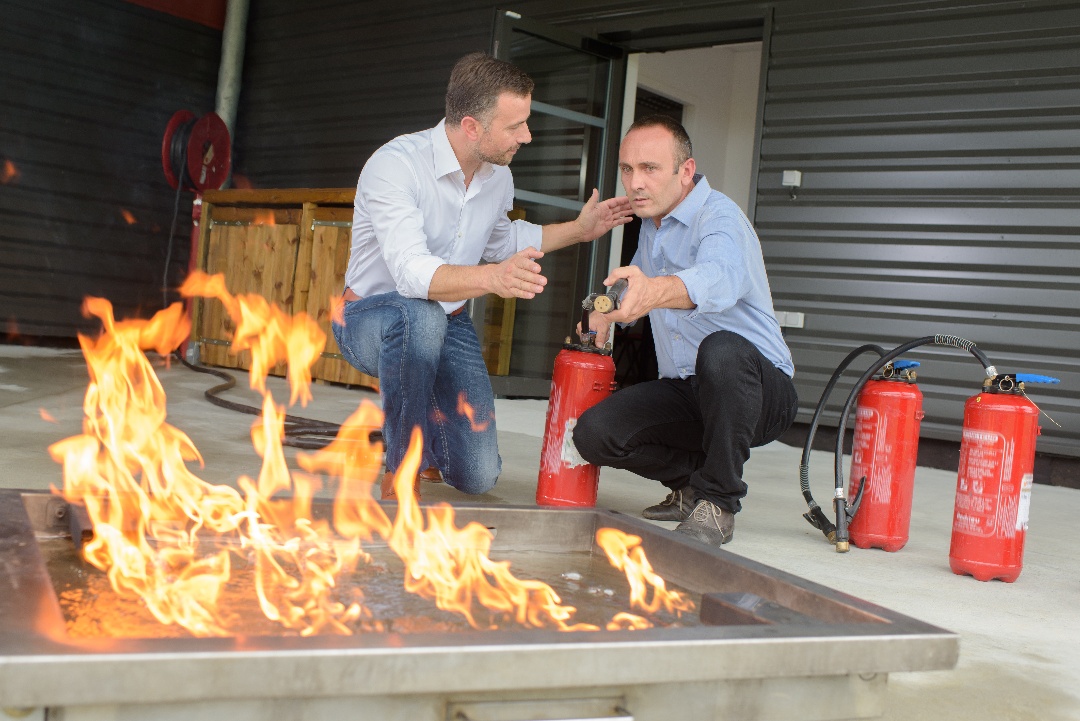Ultimate Guide to Fire Extinguishers: Testing, Inspections, Maintenance
by Brothers Fire & Security | Jan 17, 2025 | Fire System, Security System, Monitoring | 0 comments

Most fires start out small enough to be easily put out with a fire extinguisher. Like any lifesaving equipment, portable fire extinguishers must be operable at all times and have people properly trained to operate them. It’s crucial to understand the different types of fire extinguishers and proper maintenance procedures to maintain a safe environment.
Understanding Fire and Fire Extinguishers
Different types of fire extinguishers are suitable for different fire classes. A fire requires three elements: fuel, heat, and oxygen—known as the fire triangle or combustion triangle. Fire extinguishers are designed to eliminate one or more of these elements to put out a fire. Having the right type of fire extinguisher is critical to protecting lives and assets.
Here’s a breakdown of the different types of extinguishers and the classes of fire they’re suitable for.
|
Class of Fire |
Type of Fire Extinguisher to Use |
|
Class A: |
|
|
Class B: |
|
|
Class C: |
|
|
Class D: |
|
|
Class K: |
|
Fire Extinguisher Inspection Procedures
The NFPA 10 requires fire extinguishers to be inspected when they're first installed and visually inspected monthly after that. Anyone knowledgeable about extinguishers can carry out an inspection.
Monthly Inspection Checklist:
- Ensure the extinguisher is in its designated location, unobstructed, and clearly marked with signage.
- Verify the pressure gauge is in the operable range.
- Inspect for structural damage (e.g., dents, cracks, or rust).
- Confirm the extinguisher’s weight indicates it is full.
- Check that the pin and tamper seal are intact and undamaged.
If any of the above conditions are not met, contact a certified fire extinguisher maintenance company for a thorough inspection. They’ll make repairs and replacements wherever necessary. In environments prone to rust, impact, or tampering, more frequent inspections are advisable.
Annual Inspection:
A licensed fire suppression contractor must perform annual inspections. These inspections include:
- Evaluating the extinguisher’s size and suitability.
- Attaching a tag indicating the date of inspection and servicing.
Maintenance Procedures
Unlike the monthly visual inspection, fire extinguisher maintenance needs to be performed by a certified person familiar with NFPA 10 requirements. Maintenance can be conducted once a year or when indicated by an inspection discrepancy.
Fire extinguisher maintenance typically involves:
- Examining mechanical parts, the extinguishing agent, and expelling mechanisms.
- Assessing the extinguisher’s physical condition.
The maintenance procedures are detailed in the manufacturer’s service manual and must be performed by trained and certified professionals. Brothers Fire & Security Monitoring can assist you with testing, maintaining, and refilling any fire extinguisher. Contact us to figure out the best fire prevention system for your building.
Hydrostatic Testing Procedures
A hydrostatic test involves an internal and external examination of the extinguisher. The extinguisher is stripped down to its shell and filled with water at a specific pressure for a predetermined time to detect any leakage or distortion. Afterward, the extinguisher is drained, dried, and reassembled if it passes the hydrostatic test. Extinguishers that fail the test must be discarded.
The frequency of hydrostatic testing depends on the type of extinguisher you have (typically every six or 12 years). This process must be carried out by trained professionals using proper equipment.
Protecting Your Future: The Value of Professional Fire Safety Maintenance
Proper fire extinguisher maintenance isn't just about compliance—it's about ensuring the safety of your people and property. Regular testing, inspections, and maintenance form the foundation of a comprehensive fire safety strategy that protects what matters most to your organization.
Brothers Fire & Security brings decades of experience in fire protection services, ensuring your fire extinguishers and other fire safety equipment meet all current standards and regulations. Our certified professionals deliver comprehensive inspection services, professional maintenance and testing, expert consultation for fire safety planning, and 24/7 emergency support that gives you peace of mind.
Don't wait until an emergency to discover your fire protection equipment isn't properly maintained. Contact Brothers Fire & Security to schedule your professional fire extinguisher inspection and ensure your fire protection systems are ready when you need them most.
Recent Posts
- Hidden Risks: Why Aging Fire Systems Need More Than Just Annual Inspections
- Strategic Security Camera Placement: Maximizing Protection Through Integration
- Why NFPA 72 Makes Integrated Fire & Security Monitoring Systems Essential
- Benefits of a Building Access Control System
- Ultimate Guide to Fire Extinguishers: Testing, Inspections, Maintenance

